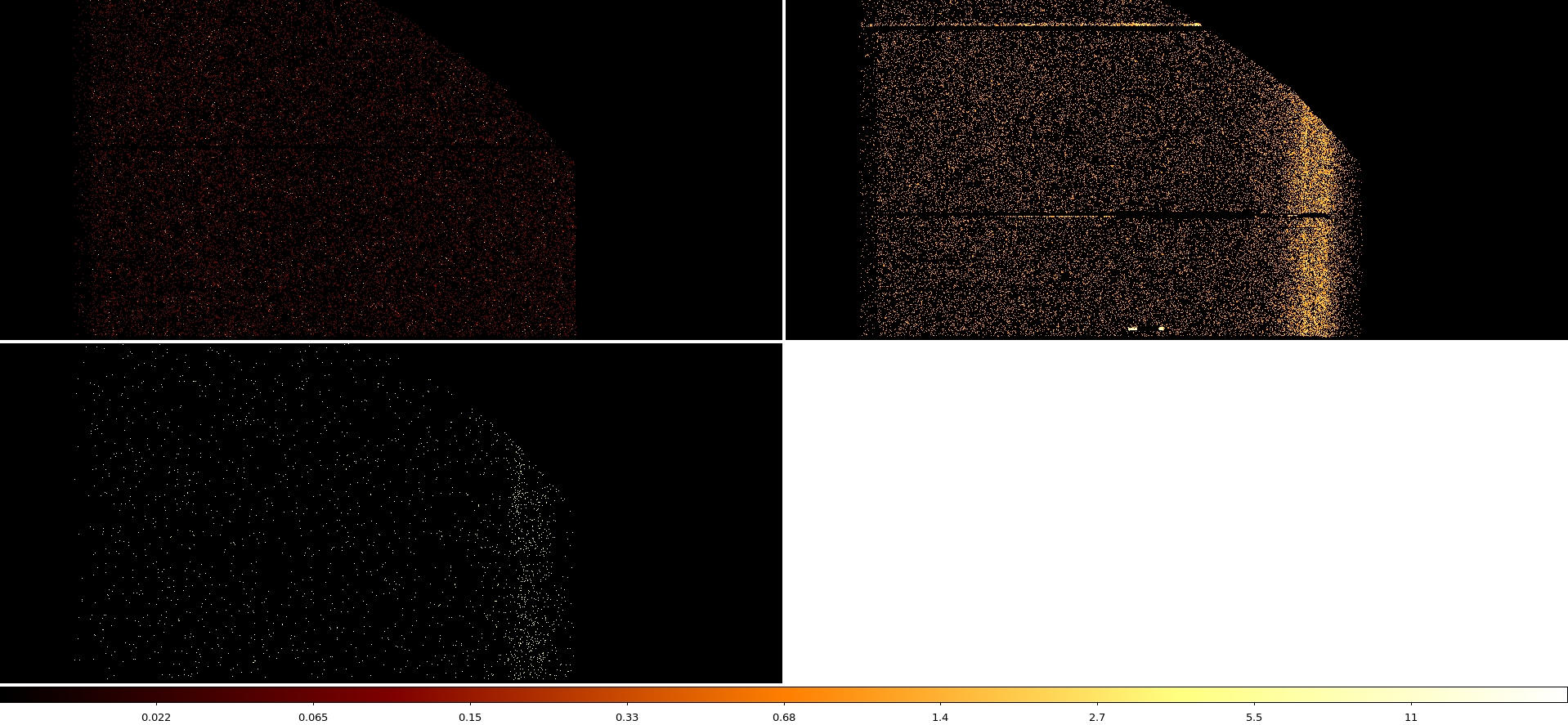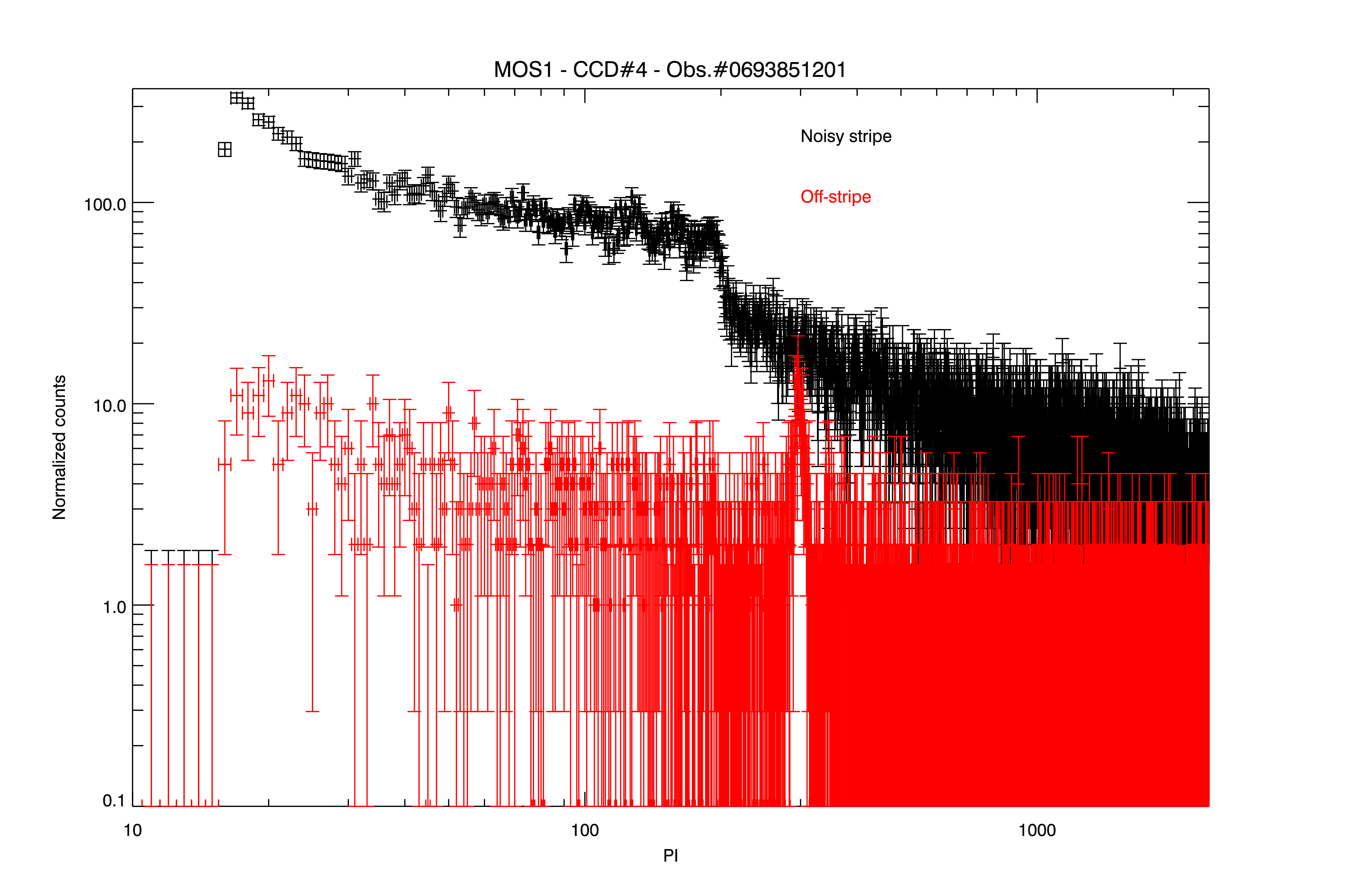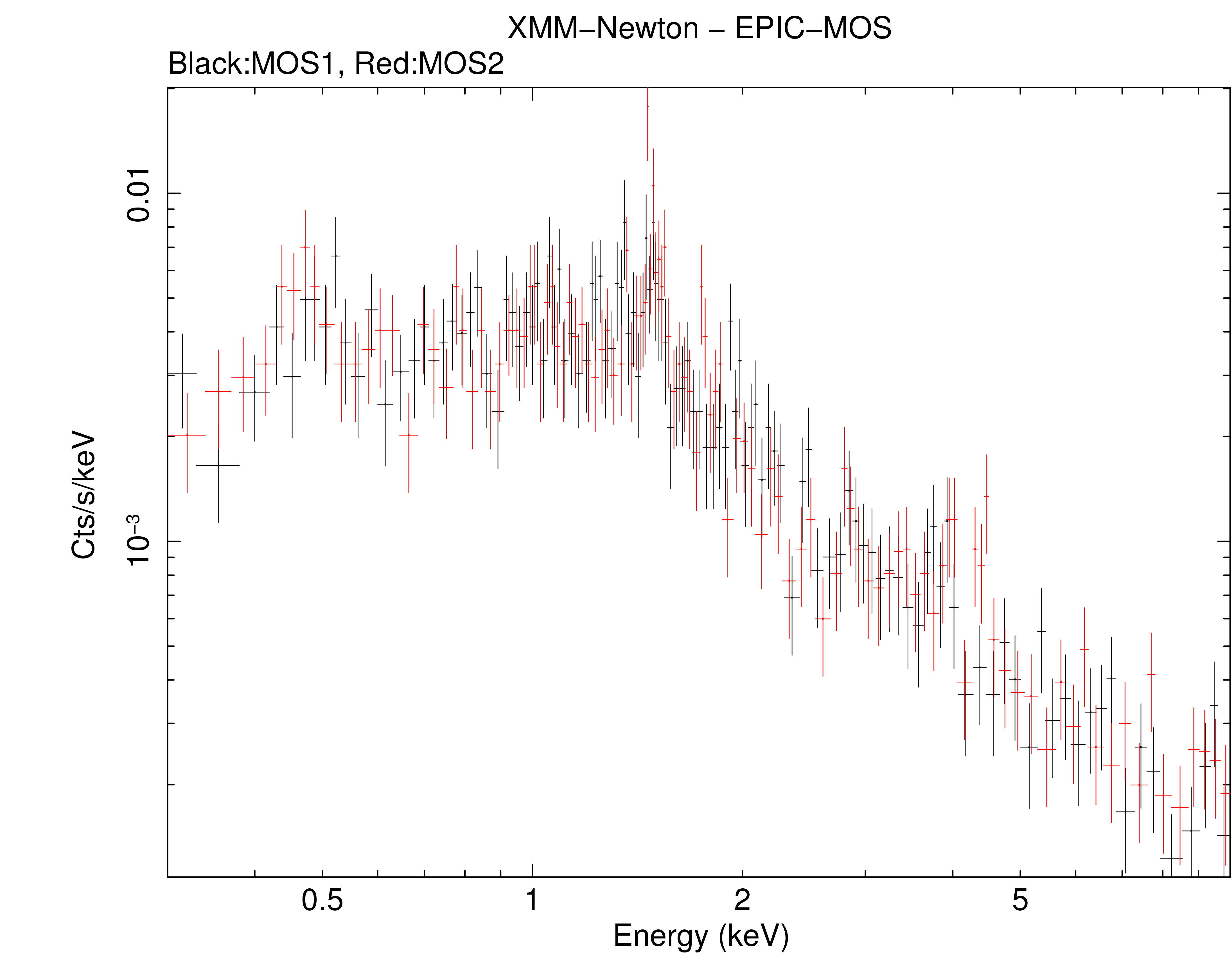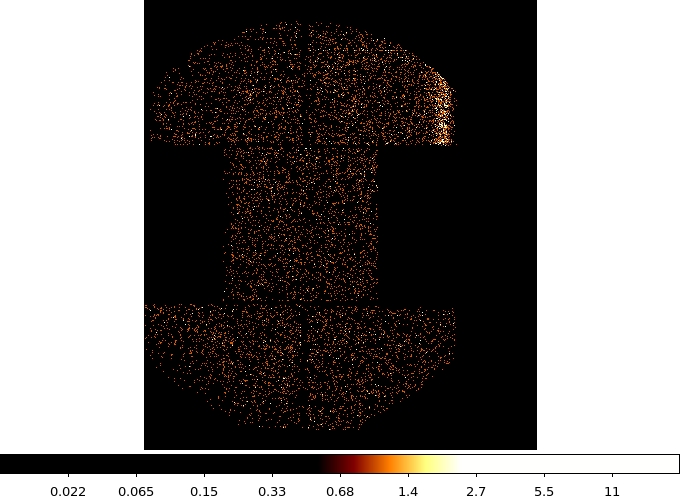MOS1-CCD3 Impact - XMM-Newton
Scientific impact of the "MOS1-CCD3 event" on the other CCDs |
Last updated: 30-Apr-2013 |
On the scientific impact of the MOS1-CCD3 event on the other MOS1 CCDs
At about 06:51 UT on 11 December 2012, during XMM-Newton revolution 2382, an event was registered in the focal plane of the EPIC MOS1 instrument. This event, most likely to be a micro-meteoroid impact, led to CCD3 being declared "unusable for science". Details on the scientific impact of this loss are available in this report.
Hereafter, we describe the impact of this event on the other MOS1 CCDs as of 30 April 2013. The main conclusions can be summarised as follows:
- the scientific quality of spectra and light curves extracted from all operating CCDs is nominal.
- the frame-time of all MOS1 CCDs in "Full Frame" mode and of the peripheral CCDs in "Timing Mode" has been modified from 2.6 to 2.7s.
- a small number of columns in CCD4 exhibit enhanced noise. They are blanked on board following recent updates of the observational database. Analysis is ongoing at the SOC to achieve the best compromise between usable scientific area and image cleanness.
New bad pixels and columns
A few more than 200 (out of 360,000) new bad pixels, and 7 (out of a total of 600) new bad columns appeared in the MOS1 peripheral CCDs after the MOS1-CCD3 event. Most of them showed up as a "noisy stripe" in the outermost region of CCD4 (the top right in detector coordinates, see Fig. 1).
In Fig.2 we compare CCD4 images extracted from CAL_CLOSED exposures of similar depth taken before and after the MOS1-CCD3 event. As far as the latter are concerned, we compare images taken before and after the first update of the operational database, blanking some of the new bad pixels and columns. In Obs.#0701382101 the bright horizontal lines close to blanked rows have a maximum of 2 counts per pixel. A small patch of bright pixels around (DETX,DETY)=(7635,6689) reaches a maximum of 18 counts per pixel.

Fig.2: MOS detector coordinates CCD4 images from CAL_CLOSED exposures in: Obs.#0412602401 (Rev.#2347; top left);
Obs.#0701382101 (Rev.#2398; top right); Obs.#0692790301 (Rev.#2403, bottom left).
The spectrum of this feature is soft compared with the typical sky+instrumental background of an off-stripe area on the same CCD (Fig.3).

Fig.3: Comparison between PI spectra of an on- versus an off-stripe region in Obs.#0693851201 (Rev.#2388).
Spectral analysis of sources in MOS1 CCD#4 and CCD#7
The increase in the number of events due to the new bad, hot and a saturated CCD areas after the MOS1-CCD3 event yielded a doubling of the frame-time in CCD4 and CCD7 (which are linked to the same on-board sequencer). Events associated to these frames are identified by the SAS in the event list with a FLAG value different from 0. Hence, spectra extracted using the data screening selectlib expression FLAG==0 contain very few, or even zero counts.
This condition occurs for almost all events falling on MOS1 CCD4 and CCD7, only in data taken in "Full Frame" or "Timing" modes, after the MOS1-CCD3 event until 21st January 2013, when new instrumental parameters started to be used.
Spectra extracted from CCD4 and CCD7 using the standard data screening expression recommended for MOS spectral analysis (XMMEA_EM) are statistically indistinguishable from simultaneous MOS2 spectra extracted from the same sky region (cf. Fig.4).

Fig.4: MOS1 (black) and MOS2 (red) spectra of the same source, detected on MOS1 CCD4 after
the MOS1-CCD3 event. A simple spectral fit with a phenomenological model (photoelectrically absorbed power-law)
yields consistent parameters within their statistical uncertainties.
The energy scale is not affected by the consequences of the MOS1-CCD3 event either (cf. Fig.5).

Fig.5: PHA spectra of the calibration source around the Mn K-alpha doublet. Black: spectra taken before
the MOS1-CCD3 event; red: spectra taken after the MOS1-CCD3 event.
- Removed a total of (1) style text-align:center;
- Removed a total of (1) align=right.
- Removed a total of (5) border attribute.
- Converted a total of (5) center to div.








































 Sign in
Sign in
 Science & Technology
Science & Technology
